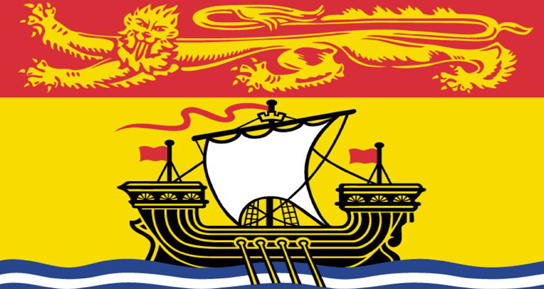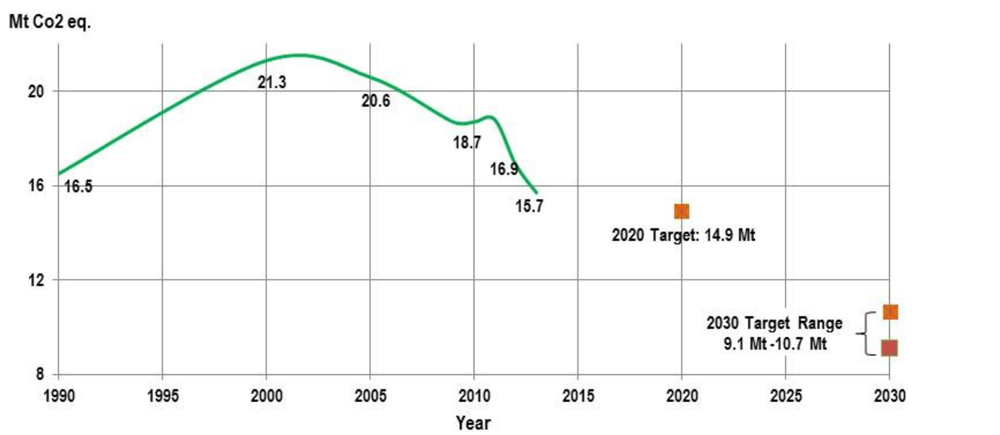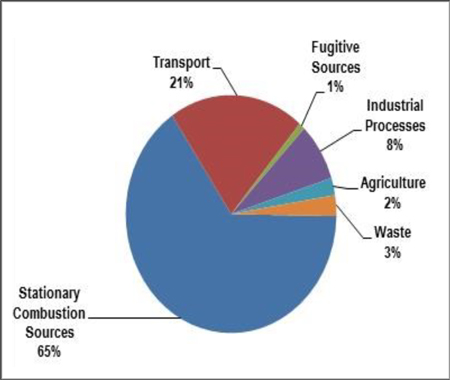New Brunswick: Environment profile
Note
This information was current as of November 2015.

New Brunswick (NB) in brief
- Premier:
- Hon. Brian Gallant (Liberal Party)
- Population:
- 753,900 (Sept. 2014)
- Total Area:
-
72,908 km
2
- Land:
- 71,450 km 2
- Freshwater:
- 1,458 km 2
- Real GDP (gross domestic product) 2013:
- $28.3 billion (in 2007 dollars)
- Contribution to real Canadian GDP 2013:
- 1.7%
NB budget 2015-16
- Budgeted total expenditures:
- $8.6 billion
- Funds Allocated to DoE:
-
$12.9 million
- 0.2% of total budget
- 5.9% increase from 2014-15
Key environmental federal-provincial agreements
- Agreement Concerning the Implementation of the North American Waterfowl Management Plan and Other Bird Conservation through the Eastern Habitat Joint Venture
- Canada-NB Water Quality Monitoring Agreement
- Canada-NB Water Quantity Surveys Cost Sharing Agreement
Climate change
- Department responsible for climate change:
- Department of Environment and Local Government
- Minister responsible for climate change:
- Hon. Brian Kenny
- Legislation and regulations:
- Electricity Act, Energy and Utilities Board Act, Energy Efficiency and Conservation Agency Act, Energy Efficiency Act, Electricity from Renewable Resources Regulation, Air Quality Regulations
New Brunswick GHG (greenhouse gas) emissions and targets

Sources:
- National Inventory Report (2015)
- 2020 Target: NB Climate Change Action Plan 2014-2020
- 2030 Target: New England Governors/Eastern Canadian Premiers resolution adopted Aug. 31, 2015
Long description
Figure 1 presents a single time series line graph with the horizontal axis spanning years 1990 to 2030 in five year increments. The vertical axis is in megatons of carbon dioxide equivalent and spans eight to 20 Mt in increments of 4. The line begins at 16.5 Mt CO2 equivalent in 1990 and rising steadily until reaching a peak of 21.3 Mt around the year 200, falling to 18.7 just before 2010 and 15.7 around 2013. The graph also indicates that the 2020 emissions target is 14.9 Mt and that the 2030 target range is 9.1-10.7 Mt.
Provincial GHG emissions reduction targets
- At 1990 levels by 2012
- 10% below 1990 levels by 2020
- 35-45% below 1990 levels by 2030
- 75-85% below 2001 levels by 2050
- 2020 target equivalent to a 2005 baseline: 28% below
- 2030 target equivalent to a 2005 baseline: 48-56% below
NB sources of GHG emissions, 2013

Source: National Inventory Report, 2015
Long description
Figure 2 presents a pie chart of the distribution of major greenhouse gas sources in New Brunswick.
- Stationary combustion sources: 65%
- Transport: 21%
- Fugitive sources: 1%
- Industrial processes: 8%
- Agriculture: 2%
- Waste: 3%
- Climate Change Strategies: Climate Change Action Plan 2014-2020 (2014)
- Total NB Emissions, 2013: 15.7 Mt (Source: National Inventory Report)
- NB contribution to total Canadian GHG Emissions, 2013: 2.2%
- Ranked 8th largest GHG emitter among Canadian provinces and territories in 2013
- GHG per Capita, 2012: 21.7 tonnes; ranked 3rd highest GHG emitter per Capita, 2012
- NB Department of Environment and Local Government has new focus on climate change and there has been increased support for climate change initiatives, particularly those related to impacts and adaptation.
- The 2014 action plan focuses on adaptation measures, reduction of GHG emissions while maintaining economic growth, reducing government GHG emissions, and measuring and reporting on progress.
- Most significant reductions are expected to come from a Renewable Portfolio Standard requiring NB Power to have 40% of electricity sales sourced from renewable energy by 2020. Electricity generation is the main source of GHG emissions in NB.
- NB intends to add climate change to its environmental assessments review.
Water
- Departments responsible for water:
- Environment and Local Government, Natural Resources, Health, Agriculture, Aquaculture and Fisheries, Tourism, Heritage and Culture
- Minister responsible for water:
- Hon. Brian Kenny
- Legislation and regulations:
- Clean Water Act, Clean Environment Act, St. Croix International Waterway Commission Act, Potable Water Regulation, Water Well Regulation, Watershed Protected Areas Designation Order, Watercourse and Wetland Alteration Regulation, Water Quality Regulation
- Water Strategies: Long-Term Wetland Management Strategy (2013), Coastal Areas Protection Policy (2002), Wetland Conservation Policy (2002)
- The Department of Environment and Local Government is the primary agency responsible for water management and infrastructure. The Department of Natural Resources is responsible for policy development and enforcement of regulations on Crown lands. Other involved departments include Health (drinking water), Agriculture, Aquaculture and Fisheries (freshwater requirements for agriculture and aquaculture), and Tourism, Heritage and Culture (recreational use of water).
- Key priorities include watershed protection, wetland management, St. Croix River management and flood mitigation.
- A moratorium on hydraulic fracturing/shale gas has been implemented. NB is currently undertaking a scientific review and will not lift the moratorium unless a number of conditions are met including consultations First Nations and a royalty regime.
- As part of NB’s 2013 Oil and Natural Gas Blueprint, the DoE will focus on water monitoring, water use in exploration and extraction, wastewater treatment, and water-related public information. The Blueprint also commits NB to develop a comprehensive water management strategy.
- The 2013 Long-Term Wetland Management Strategy is intended to improve wetland management so that it incorporates hydrology, water quality and biodiversity considerations and ensures the protection of all provincially significant wetlands.
- The 2001 Watershed Protection Program regulates commercial, industrial, residential and agricultural activities that have the potential to affect water quality in designated watersheds.
Environment Canada and NB Collaboration on Water
- Canada-NB Water Quality Monitoring Agreement
- Canada-NB Water Quantity Surveys Cost Sharing Agreement
- Atlantic Ecosystem Initiative
- National Conservation Plan Gulf of Maine Initiative
Biodiversity and wildlife
- Department responsible for biodiversity and wildlife:
- Department of Natural Resources
- Minister responsible for biodiversity and wildlife:
- Hon. Denis Landry
- Legislation:
- Species at Risk Act, Protected Natural Areas Act
- Biodiversity and Conservation Strategies: New Brunswick Biodiversity Strategy (2009), A Strategy for Crown Lands Forest Management (2014)
| Extirpated | Endangered | Threatened | Special Concern | |
|---|---|---|---|---|
| Total: 41 Source: Species at Risk Public Registry January 2015 |
2 | 14 | 11 | 14 |
- The broad goals of NB’s biodiversity strategy are conservation of NB’s genetic, species and ecosystem diversity, and sustainable use and development of NB’s biological resources. The follow-up biodiversity action plans intended to implement the strategy have not yet been developed.
- NB updated its endangered species legislation in 2012. The new Species at Risk Act clearly separates the steps to officially recognize a species as being at risk from the decisions on what government and society will do to address threats to the species.
- Under NB’s 2014 forest management strategy, the amount of Crown land designated as Protected Natural Areas will nearly double, by creating 138 new protected natural areas and expanding 21 existing ones.
- Percentage of freshwater and land protected in NB: 3.1% (Source: Canadian Environment Sustainability Indicators, 2013).
- Environment Canada maintains 8 protected areas in NB, including 5 National Wildlife Areas and 3 Migratory Bird Sanctuaries, comprising over 7,000 hectares of NB’s protected lands and waters.